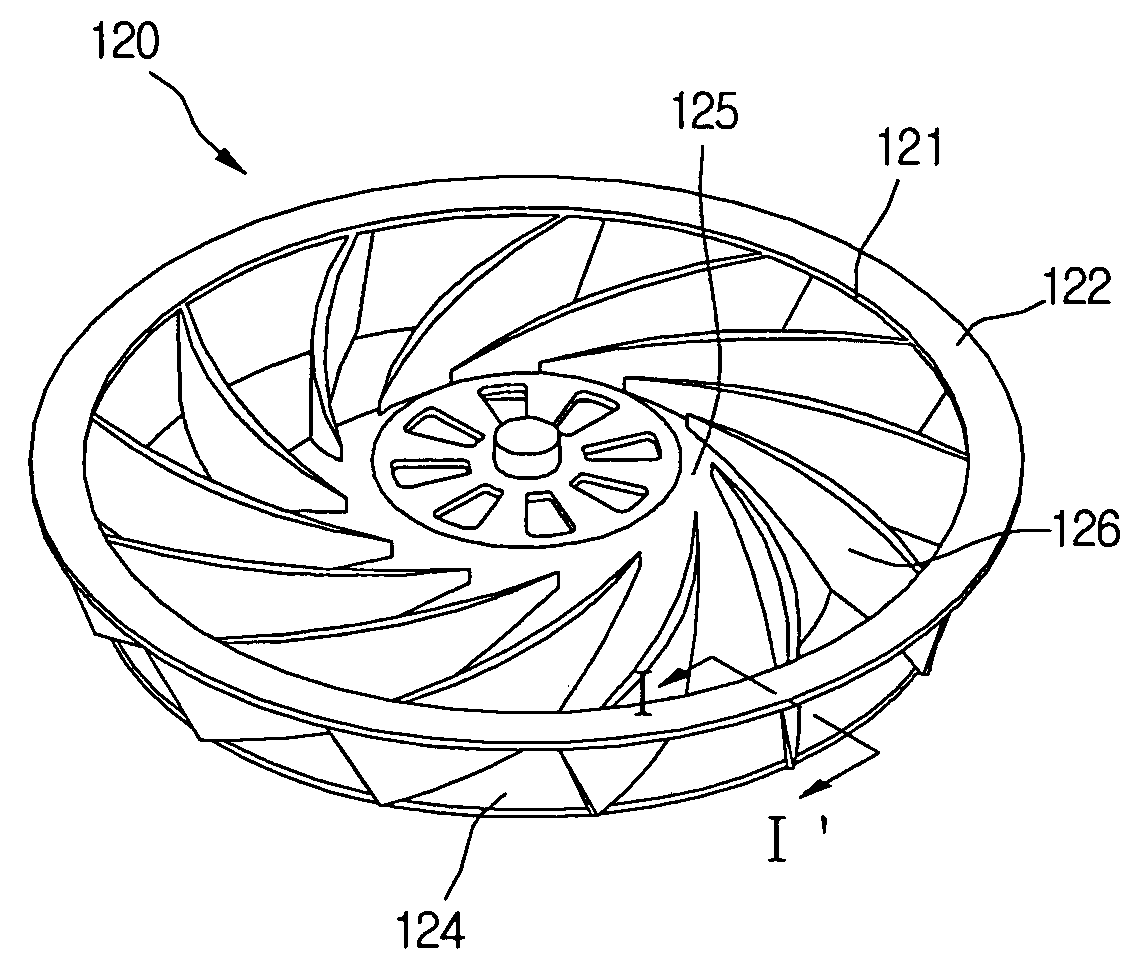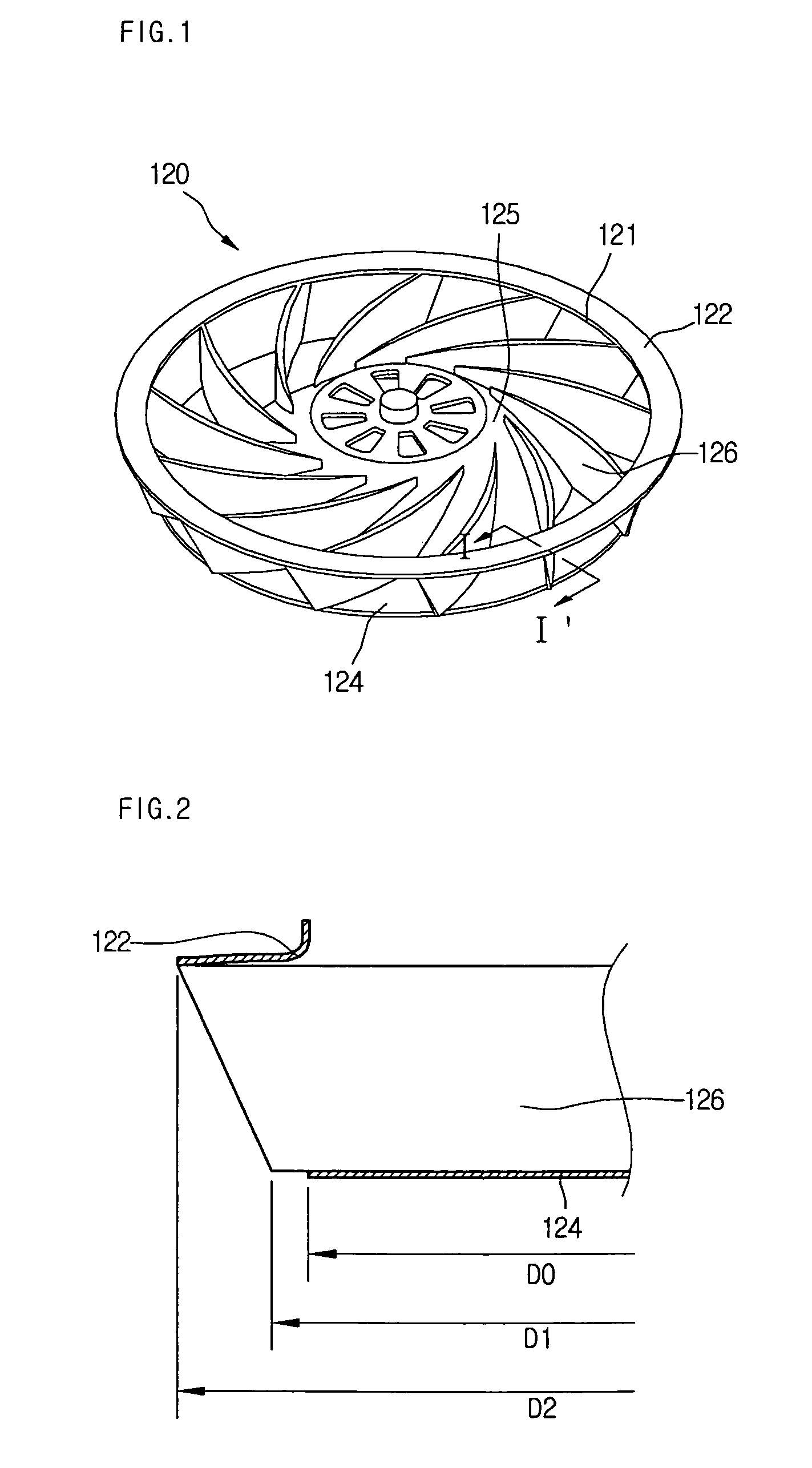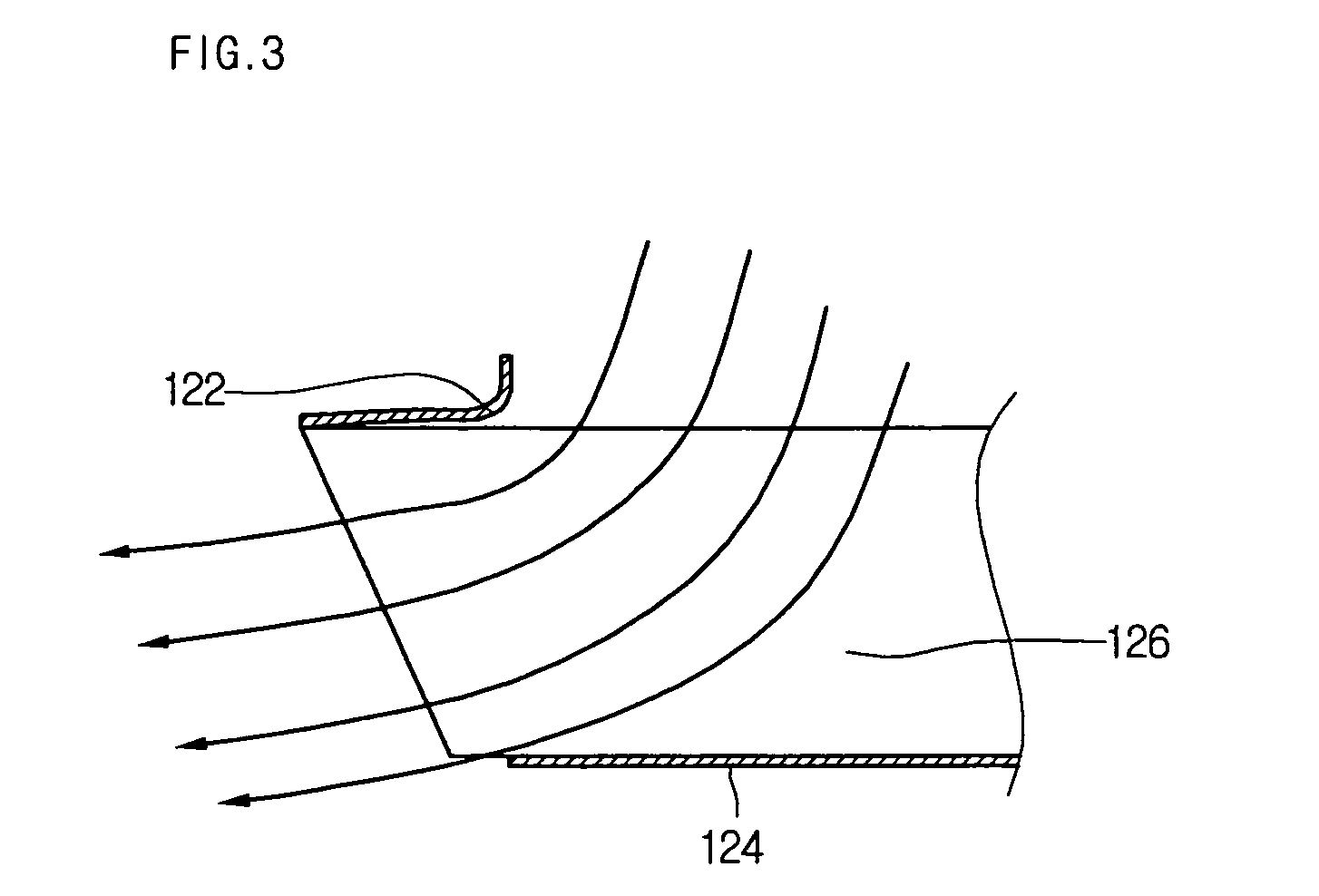Blower fan
a blower fan and fan body technology, applied in the field of blower fans, can solve the problems of increased noise, non-guide area, and insufficient airflow of the air passing the blower fan, and achieve the effects of reducing power consumption rate, reducing noise, and reducing eddy curren
- Summary
- Abstract
- Description
- Claims
- Application Information
AI Technical Summary
Benefits of technology
Problems solved by technology
Method used
Image
Examples
Embodiment Construction
[0023]Reference will now be made in detail to the preferred embodiments of the present invention, examples of which are illustrated in the accompanying drawings. Wherever possible, the same reference numbers will be used throughout the drawings to refer to the same or like parts.
[0024]FIG. 1 shows a blower fan according to an embodiment of the present invention.
[0025]The inventive blower fan includes a shroud 122 formed on an air intake side, a hub 124 formed on an air discharge side, and a plurality of blades 126 formed between the shroud 122 and the hub 124.
[0026]Formed on a front surface of the shroud 122 is a bell mouth 130 (see FIG. 6) for effectively guiding the airflow of intake air.
[0027]In this embodiment, although a turbo fan is exampled as the inventive blower fan, the concepts of the present invention are not limited to the turbo fan. The concepts of the present invention can be applied to a variety of other types of blower fan.
[0028]As a feature of the present invention...
PUM
 Login to View More
Login to View More Abstract
Description
Claims
Application Information
 Login to View More
Login to View More - R&D
- Intellectual Property
- Life Sciences
- Materials
- Tech Scout
- Unparalleled Data Quality
- Higher Quality Content
- 60% Fewer Hallucinations
Browse by: Latest US Patents, China's latest patents, Technical Efficacy Thesaurus, Application Domain, Technology Topic, Popular Technical Reports.
© 2025 PatSnap. All rights reserved.Legal|Privacy policy|Modern Slavery Act Transparency Statement|Sitemap|About US| Contact US: help@patsnap.com



